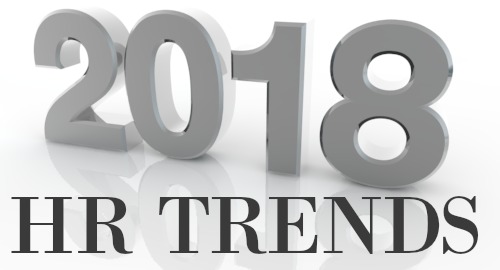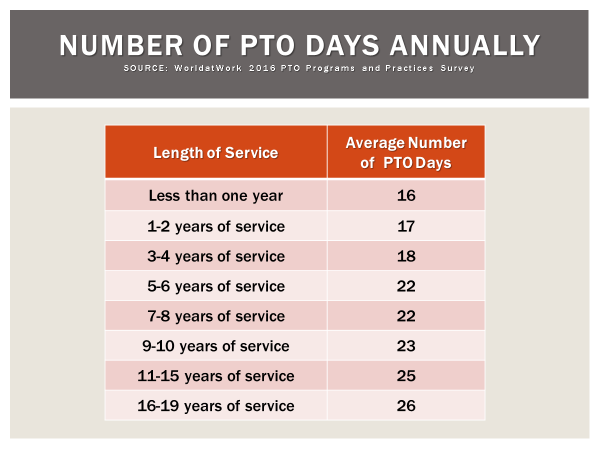Ten Emerging HR Trends for 2018
by Jean Seawright

Paid sick and parental leave . . . pay history bans . . . predictable scheduling statutes . . . mandatory E-Verify . . . compensatory time off . . . an increase in the guaranteed salary level for White Collar workers . . . The list goes on. Which of these employment regulations will impact your business in 2018 is yet unknown, but regardless of your revenues, location, or number of employees, one thing is certain--it will be challenging to find and hire qualified workers. And the challenges won't subside any time soon. Macroeconomic realities, including a workforce that is growing at its slowest pace in over a half-century, aging workers exiting the labor force, a widening skills gap, and faster-than-average employment gains in several occupational sectors, indicate that labor shortages are here to stay.
This "new normal" is a tough pill to swallow for many established independent businesses that have grown successfully and hired and retained workers for many years. But current labor shortages are now forcing businesses to consider changes to HR practices and to adopt creative ways to attract and retain talent.
If you believe it may be time to raise the bar on your HR practices in order to improve your chances of attracting and retaining talent, here are 10 emerging HR trends to help you stay ahead of the curve:
- Shift from traditional vacation, sick time, and personal days policies to a PTO (Paid Time Off) policy: A PTO policy combines all paid time off programs into one benefit that permits employees to use available time off for any reason. This supports a work-life balance and flexibility--two things Millennials crave. Employees feel more in control of their time off and, as a result, unscheduled absences often decline. Best of all, managers no longer need to micromanage the reason why people miss work. In addition, one bank of time is easier to track and administer and, if a paid sick leave law is enacted in your jurisdiction, the transition will be easier because PTO benefits can run concurrently with sick leave benefits.*

- Focus on employer branding: Job seekers are sophisticated shoppers. Employers must showcase their brand and "sell" candidates on why they should work at the company. The most effective website career pages are optimized for smartphones, use visual platforms like YouTube, include video clips with current workers sharing stories about what it's like to work at the company, and convey a concise but compelling message about why the business is a great place to work.
- New and unique fringe benefits: Some of the "hot" benefits today include pet insurance, student loan repayment plans, gym membership, paid volunteer days, paid family leave, PTO, telehealth services, enhanced bereavement leave, and "Bring Your Parent to Work Day."
- Better bosses and assigned mentors: As baby boomer managers retire, the next generation is smaller in number and poorly prepared to replace them. Companies that want to retain talent understand that management training for new leaders is essential. They seek to develop exceptional listening skills in their managers and encourage them to increase their facetime and the frequency of communication with their employees. These organizations also implement mentoring programs for new hires to help get them acclimated, to broaden their understanding of the organization, and to help them feel like a valued member of the team.
- Enhanced training: Younger workers want to invest in themselves. Companies that recognize this highlight growth opportunities when they recruit, and they invest in developing an internal bench of talent. They also transfer current workers more readily and for shorter assignments. To keep workers learning, employers are offering training in nontraditional work areas like personal finances, time management, and health and wellness, and they are revamping training programs into micro-learning segments that include videos, infographics, YouTube clips, and games.
- Offering a work-life balance: Flexible work is the career goal of choice for younger generations. Businesses are adjusting jobs to offer more flexibility, such as compressed workweeks, job sharing, flexible start and stop times, or other alternative schedule options. If jobs cannot be restructured to offer flexibility, companies can highlight how they support a work-life balance. For example, closing the business on Sundays or closing to the public at 6:00 p.m. each day.
- Uber-competitive compensation: There is wage pressure at the two ends of the labor market: High-skilled and low-skilled workers. Employers are paying above market rates to retain low-skilled and high-skilled workers. Employers that have not adjusted wages for workers in these categories will find it harder to hire and retain qualified workers.
- Internal recruiters: Many companies are hiring internal recruiters to source candidates locally, help keep the pipeline full, and promote the brand in the community. (Caution: Not all HR professionals are good recruiters and not all recruiters are good HR professionals. They are usually two different breeds.)
- Higher referral bonuses: Every employee has a network of friends, relatives, and general contacts. Savvy employers tap into their employees' social networks by making it worthwhile (as in BIG $$!) for the employee to become a recruiter for the company.
- Improved onboarding: To boost engagement, employers are stepping up efforts to create organizational commitment from day one. New-hire orientation programs are being redesigned to focus on the company culture and to help new hires feel like they are part of the family. Companies are adding special touches, such as lunch with managers or coworkers, a personal meeting with a top executive, presentations from leaders of every department, a small welcome gift, games that help the new employee get to know coworkers, and other unique or personalized programs designed to enhance buy-in from day one.
Of course, some of these trends may not be suitable for your business, depending on the revenue size, number of employees, location, and other factors. Nevertheless, if you foresee a vacancy or if you need to hire workers in the near future, adopting even one of these emerging trends can make a significant difference in your ability to attract and retain talent.
So why wait? There's no better time than a new year to implement new and improved HR practices!
Jean

Got questions or need HR help? Give Jean Seawright and her staff a call.
Jean L. Seawright, CMC
Seawright & Associates
140 N. Park Avenue, Suite 250
Winter Park, Florida 32789
P: 407.645.2433, ext. 14
F: 407.645.3923
www.seawright.com
[email protected]
Best of all, Group clients have exclusive access to Seawright & Associates for telephone consultation at no extra charge... it's included in your Group Retainer!
